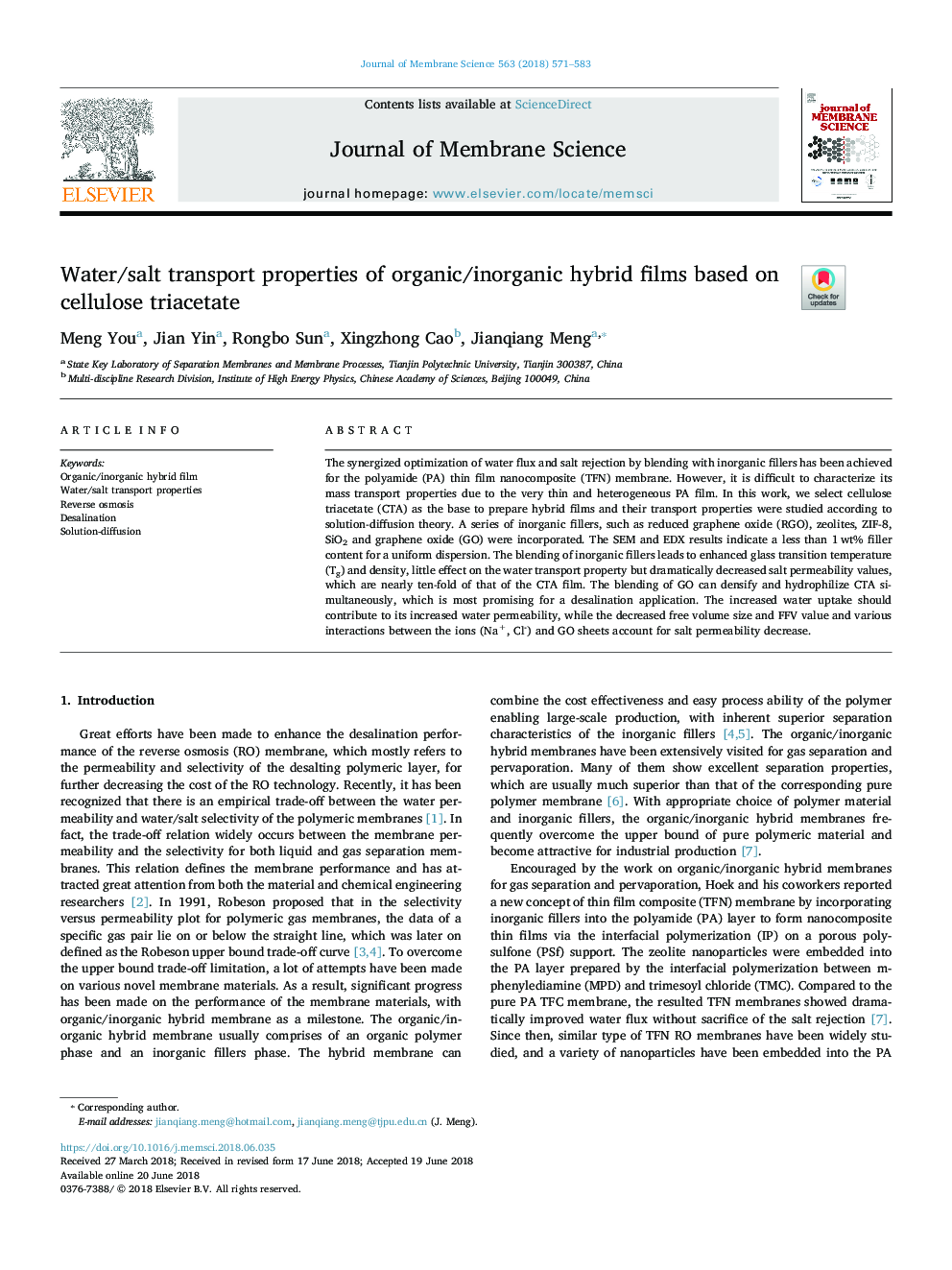| Article ID | Journal | Published Year | Pages | File Type |
|---|---|---|---|---|
| 7019722 | Journal of Membrane Science | 2018 | 13 Pages |
Abstract
The synergized optimization of water flux and salt rejection by blending with inorganic fillers has been achieved for the polyamide (PA) thin film nanocomposite (TFN) membrane. However, it is difficult to characterize its mass transport properties due to the very thin and heterogeneous PA film. In this work, we select cellulose triacetate (CTA) as the base to prepare hybrid films and their transport properties were studied according to solution-diffusion theory. A series of inorganic fillers, such as reduced graphene oxide (RGO), zeolites, ZIF-8, SiO2 and graphene oxide (GO) were incorporated. The SEM and EDX results indicate a less than 1â¯wt% filler content for a uniform dispersion. The blending of inorganic fillers leads to enhanced glass transition temperature (Tg) and density, little effect on the water transport property but dramatically decreased salt permeability values, which are nearly ten-fold of that of the CTA film. The blending of GO can densify and hydrophilize CTA simultaneously, which is most promising for a desalination application. The increased water uptake should contribute to its increased water permeability, while the decreased free volume size and FFV value and various interactions between the ions (Na+, Cl-) and GO sheets account for salt permeability decrease.
Related Topics
Physical Sciences and Engineering
Chemical Engineering
Filtration and Separation
Authors
Meng You, Jian Yin, Rongbo Sun, Xingzhong Cao, Jianqiang Meng,
